Ruger 10/22, Old and New
other By: Lee J. Hoots | December, 25
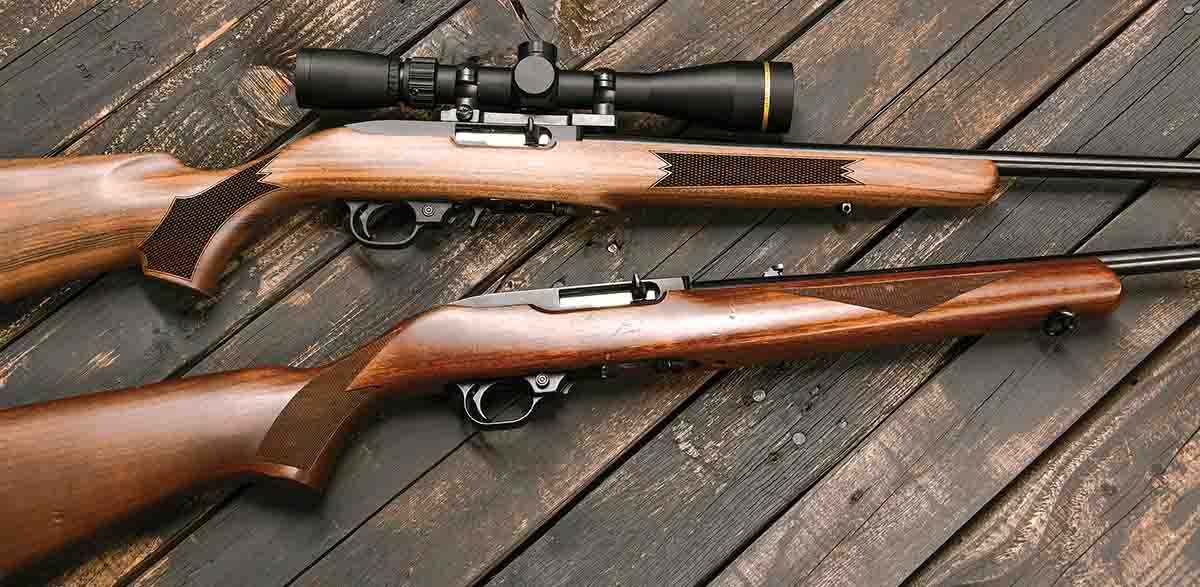
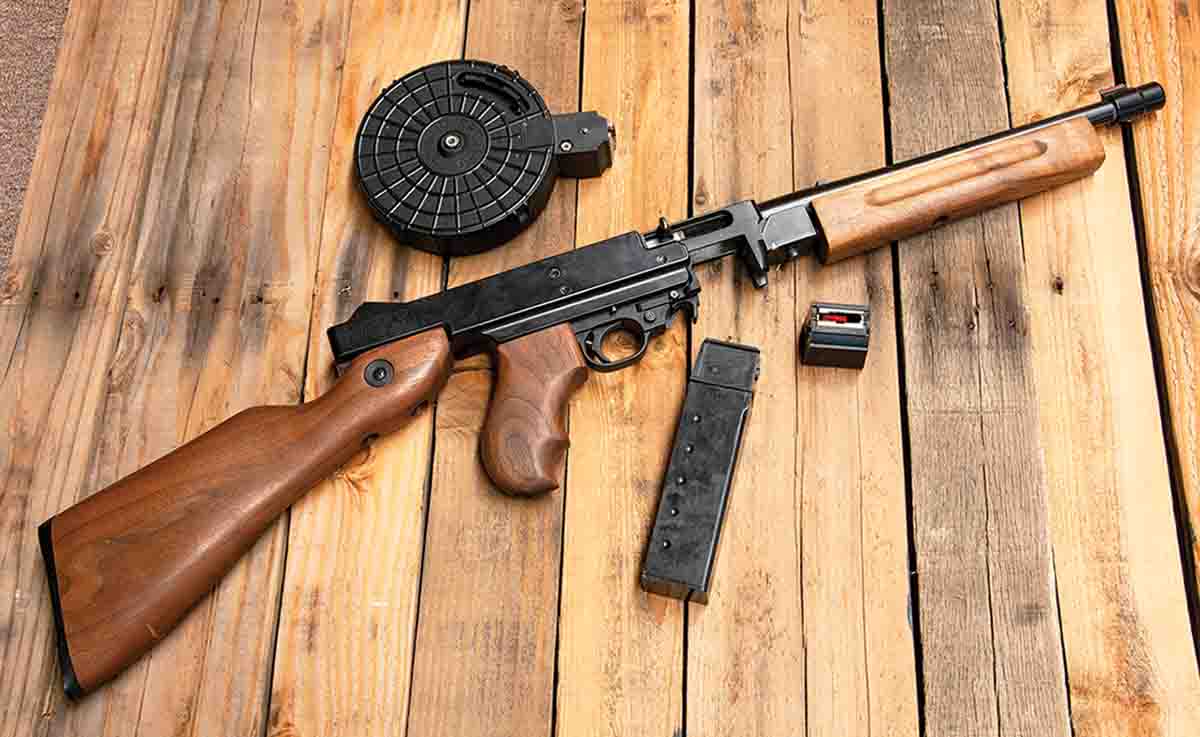
Ruger definitely was a clever fellow, and that clearly shows up in what I believe to be the most iconic rimfire rifle ever produced, the Ruger 10/22 .22 Long Rifle. The 10/22 showed up in 1964, just four years prior to President Lyndon B. Johnson signing the Gun Control Act of 1968. Over 56 years, more than 7 million 10/22 rifles have been sold, and that number continues to grow at a very quick pace.
Along with that, an entire cottage industry has bloomed around the rifle. Aftermarket gear allows shooters and varmint hunters to easily customize their rifle/rifles with barrels, action upgrades, triggers, stocks, high-capacity magazines, sights and scopes. This allows nearly endless options to suit almost any taste or specialized use, from tin can plinking to competitive shooting and small-game and varmint hunting. Because of this “Lego effect,” no other rimfire can top it. Even the modern, highly modular AR remains a distant second.

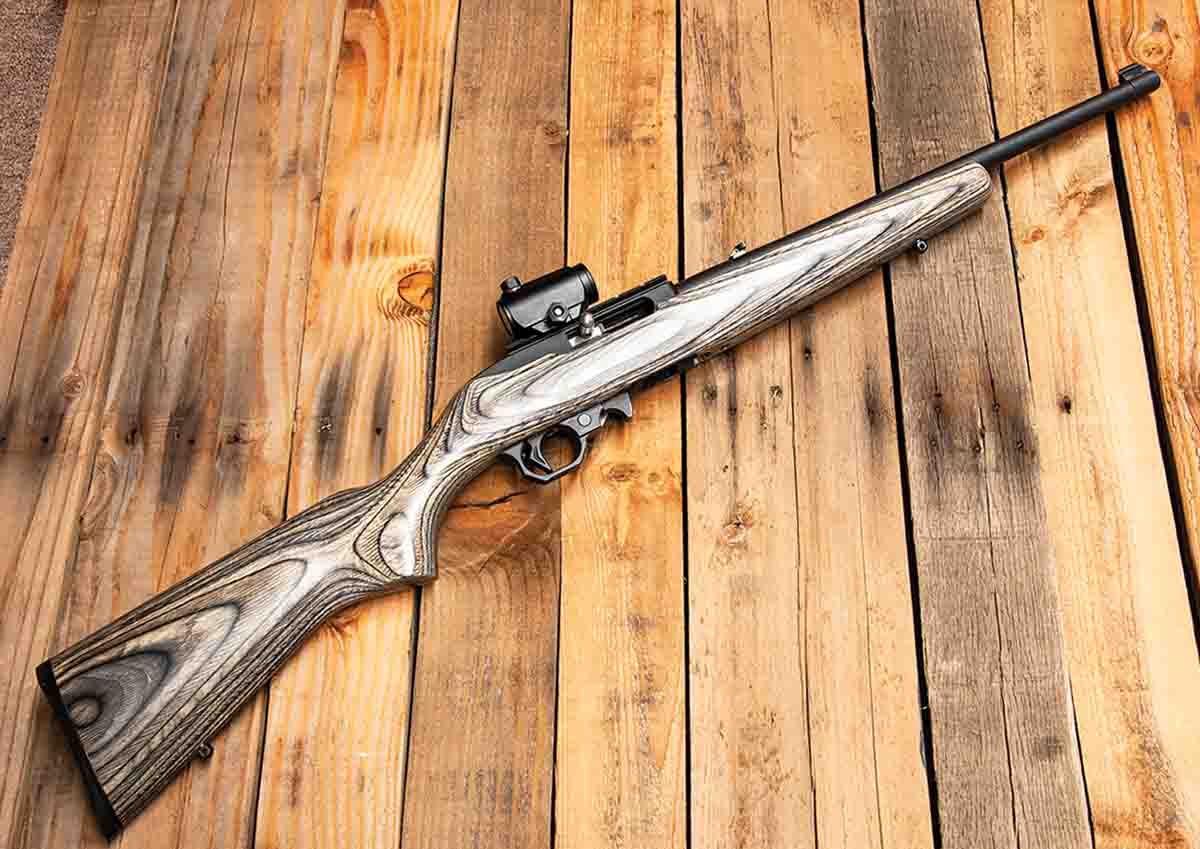
According to the 1969 edition of The Gun Digest, the 10/22 Carbine model with a walnut stock sold for roughly $50, but today inflation has bumped cost to roughly $300, still a reasonable price. The following year, Ruger introduced a Sporter model featuring a Monte Carlo stock with a fluted forend and sling swivels. Suggested price at the time was about $65.
![Early Ruger ads stated, “The New Ruger Model 10/22 [was] The Ultimate .22 RF Self-Loader.” More than 7 million have been sold, according to Ruger.](https://www.handloadermagazine.com/Media/Online Exclusive Content/2021/01 January/LH-06.jpg)
These days there are too many variants to cover them all. Ruger lists 21 options on its website as this is written, but the company sometimes drops or adds models midyear in favor of a new “special edition.” Beyond the “standard” 10/22 Carbine, rifles were also made in Takedown, Tactical, Target, Finger-groove Sporter and “Mannlicher- stocked” International configurations, as well as many dozens of other variants. A 10/22 Magnum (.22 Winchester Magnum Rimfire, nine-shot magazine) was produced from 1999 through 2006. I also distinctly remember the announcement (circa 2003) of a 10/17 Carbine chambered for the .17 Hornady Magnum Rimfire cartridge, and would have purchased one, but the rifle was never produced for the market, owing to difficulties associated with using the cartridge in blowback actions.
There is a simple reason why I have a great fondness for 10/22s. Thanks more to cash flow than my mother’s dim view on guns, there were none in the house I grew up in. That changed eventually, however, because my father was raised in the North Carolina mountains, served in the U.S. Navy and was an outdoor kind of fellow by default. By the time I was 10, snooping around revealed that a couple of rifles had appeared in his closet, including a 1970’s Ruger 10/22 Sporter.
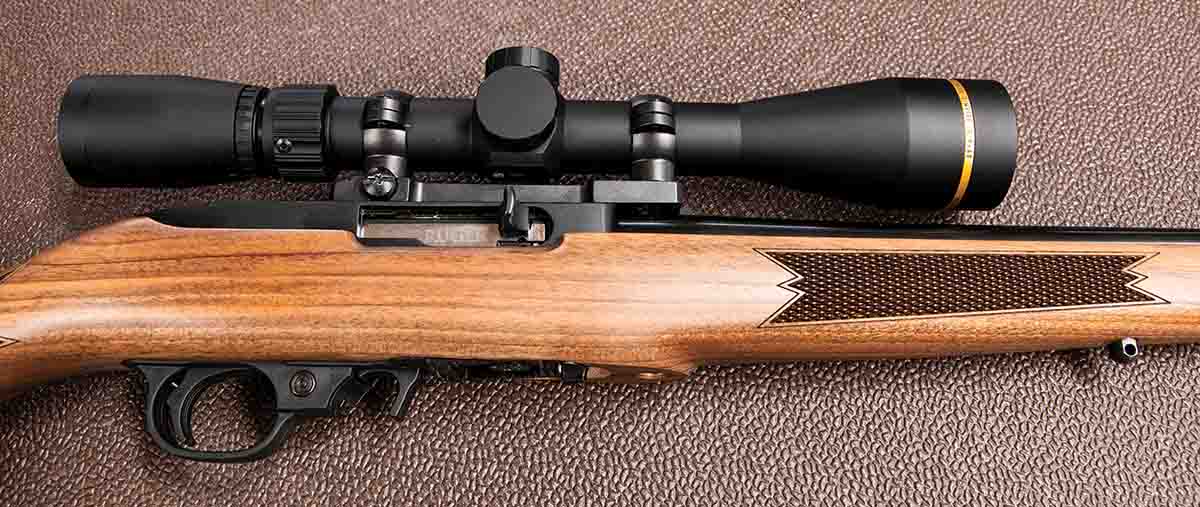
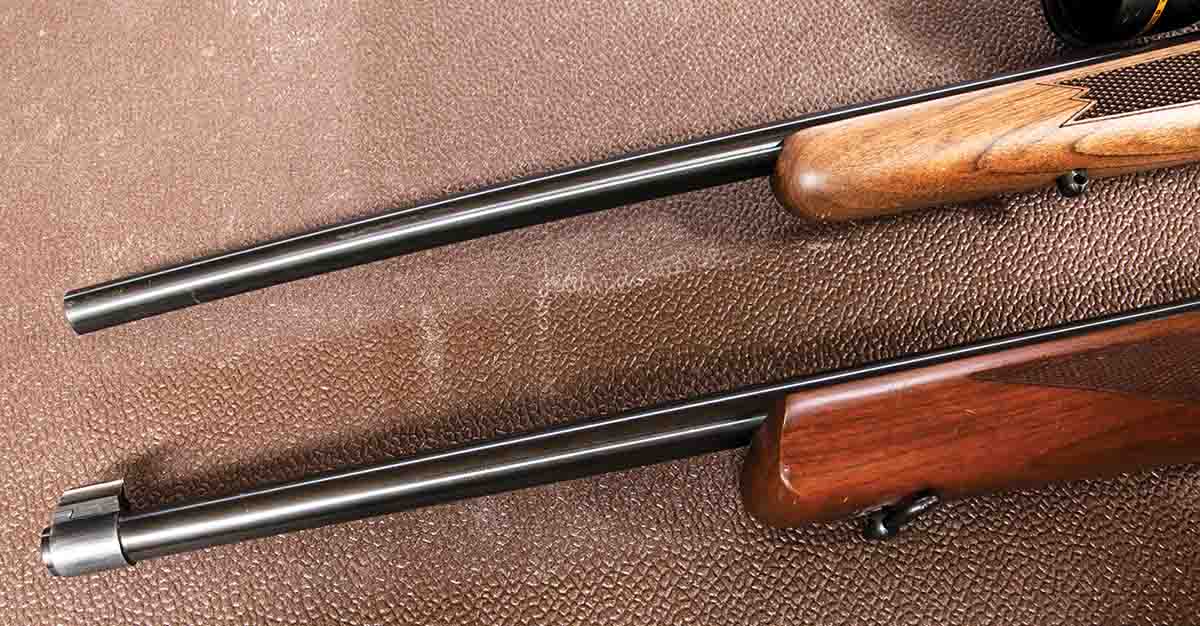
There have been a few minor changes made to the 10/22 over the years, most notably the trigger housing and magazine release button. The old 10/22s featured a cast, tough as nails trigger assembly and a flat magazine-release button. On hand, however, is a new distributer exclusive Lipsey’s 10/22 Sporter (Lipseys.com) that features a polymer trigger housing that Ruger describes as a “Heat-stabilized, glass-filled, polymer trigger housing assembly [that] is precision made of high-tech material for improved manufacturing tolerances, impact and abrasion-resistance and an unmatched ability to withstand the elements.” That’s a fancy way of admitting the trigger housing is more cost effective – for Ruger.
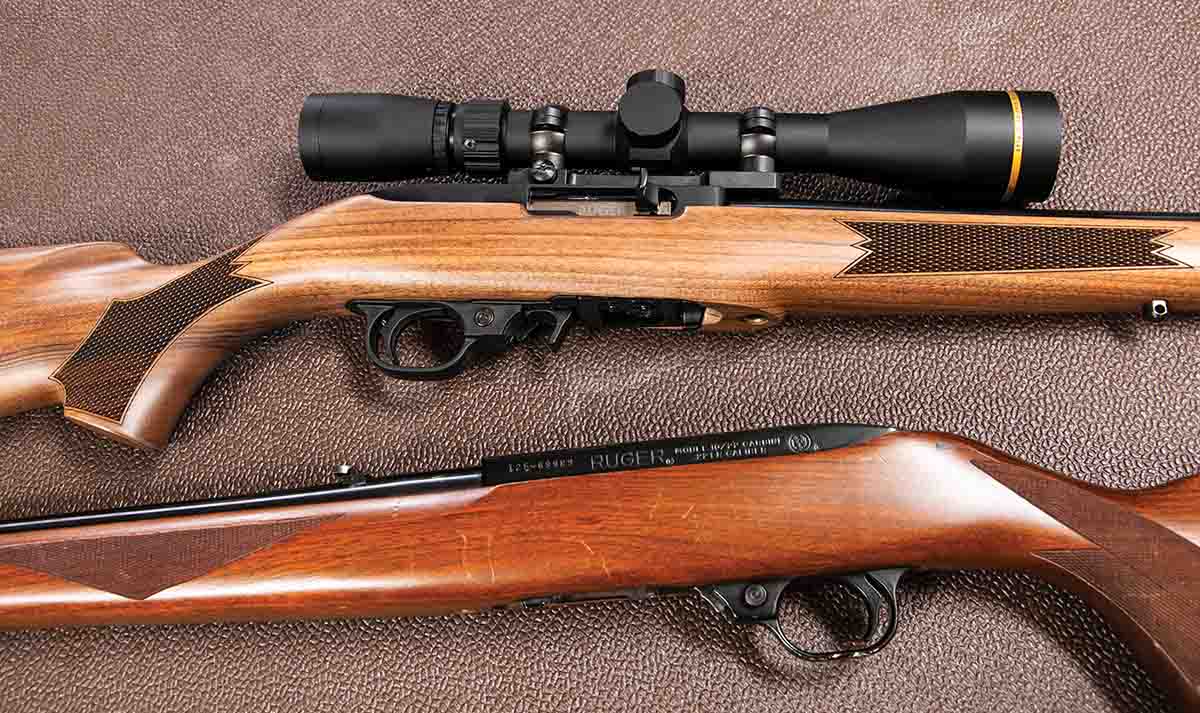
Regardless, it’s more than strong enough for a .22 rimfire, and given the changes in modern consumer ideals, the magazine release extends vertically and actually makes removal and reinstallation of the standard 10-shot magazine easier. All that is necessary is to use the trigger finger to push it forward. The thumb latch that locks the action open is still standard (a second safety, if you will), as is the push-button, cross-bolt safety. Magazines can still be removed with either safety engaged.
The rotary magazine is, and always has been, the heart of all 10/22s, but few shooters recognize its value, perhaps because it’s mostly made of plastic, and as Terry Wieland once pointed out in Rifle No. 276 (September 2014), “We have become quite blasé about magazines, expecting them to function perfectly under any conditions . . .” Again, a clever man, Ruger designed a rotary magazine that not only held its 10 cartridges in place, but it could be removed at the push of a button, whereupon it fell into the shooter’s hand. Bill Ruger fancied rifles of many types, but there is no doubt he was inspired by early rotary magazines, especially that of the Savage Model 99.
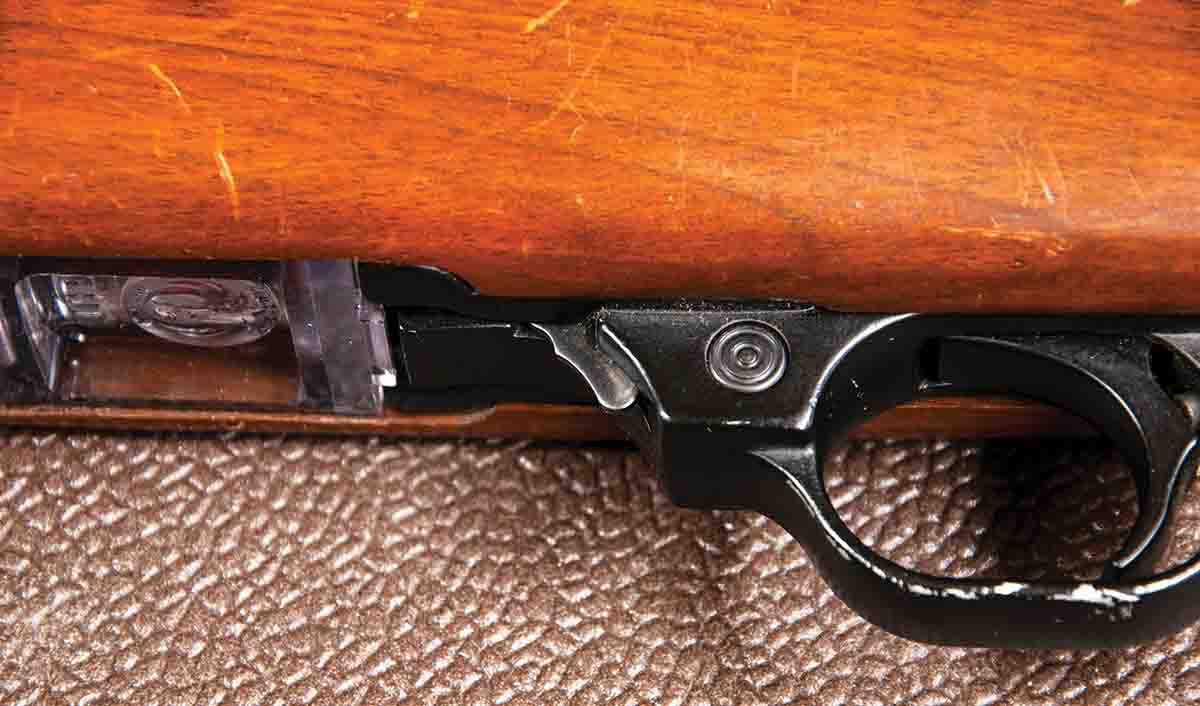
Like most 10/22s, forward of the grip the stock’s bottom is flat to accommodate the trigger housing and magazine, but forward from there the forend becomes tapered and narrows from 1.753 inches to 1.147 inches. This complements the 20-inch, blued barrel that measures 0.551 inch in diameter at the muzzle. The Lipsey’s rifle feels good in the hands and provides what might be considered a somewhat traditional sporter style rifle. To me, it is far more elegant than Dad’s rifle.
Perhaps some 10/22 fans might take exception to the fact that it’s not fitted for open sights so requires the use of a scope. The word “requires” may turn some 10/22 fans off. The fact is, however, most 10/22s end up with scopes attached, for better or worse. Total weight is 6 pounds, 5 ounces with a scope, as weighed on a certified postal scale. The 1970’s rifle has never been topped off with a scope, and its respective measurements are 1.963 and 1.606 inches, and total weight is 5 pounds, 5 ounces.
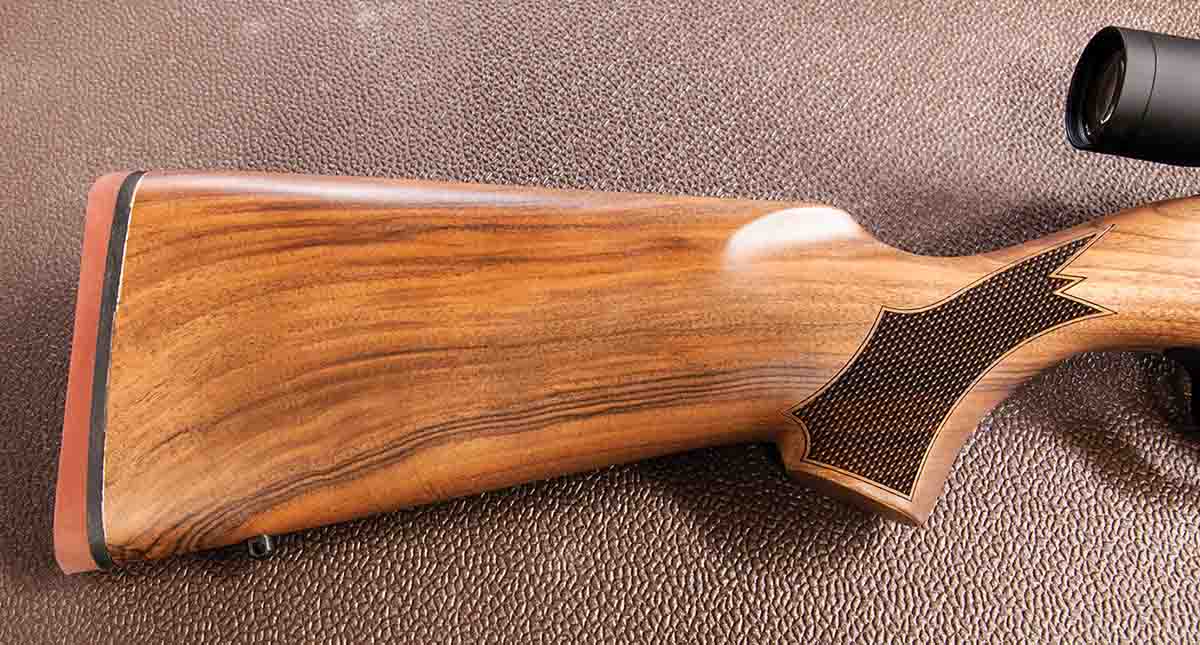
In order to shoot a few groups with the new Lipsey’s Sporter, a Leupold VX-Freedom Rimfire 3-9x 40mm scope was mounted in Leupold rings. This is probably more scope than is necessary for a .22 LR autoloader, but it’s currently one of the most popular options the company now offers, and it looks sharp. The same scope is mounted on a Kimber 22 Classic bolt-action rifle, and the holdover marks work reasonably well out to roughly 100 yards, about as far as I would consider shooting at small game. Based on the company’s T-MOA reticle, the bottom half of the reticle features descending hashmarks in 1-MOA increments for a total of 25 MOA. Using such a reticle allows plenty of holdover options for small-game hunting, provided a preferred .22 Long Rifle load is tested from a bench before hunting.
When fired from a blowback autoloader, ammunition velocities can vary far more when compared to a closed-breech bolt action, and this is indicated in the accompanying table. With the new rifle’s trigger pull weight average of 5 pounds, 2 ounces (measured with a Lyman digital scale), I didn’t expect spectacular downrange accuracy, and it shot about as well as Dad’s rifle ever has, with its trigger pull of 5 pounds, 11 ounces..jpg)
Four different loads were tested at 50 yards, starting with Winchester’s Super-X Power-Point hollowpoints, a long-time, small game favorite. Some internet pundits have apparently had failures-to-fire with this ammunition, but I have, now and then, noticed such issues from nearly every brand of rimfire ammunition in all calibers, particularly when using old rifles that probably need a little care. Another favorite is CCI’s Mini-Mag copper hollowpoint loads. A third load was Browning’s Performance Target with a 40-grain roundnose. The final ammunition tested was CCI’s Clean-22 with a 40-grain polymer-coated 40-grain lead roundnose.
Having owned and borrowed many 10/22s over the years, that very first one remains the favorite, mostly for sentimental reasons. The Lipsey’s rifle, on the other hand, is one beautiful sporter that should remind all shooters what a classy rifle should look and feel like – even if it is a “little .22 Long Rifle.” It’s proof positive that there’s more to a modern rifle than stainless and plastic. I’m certain my father would approve.

